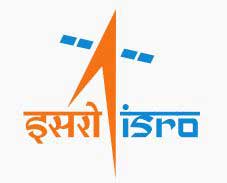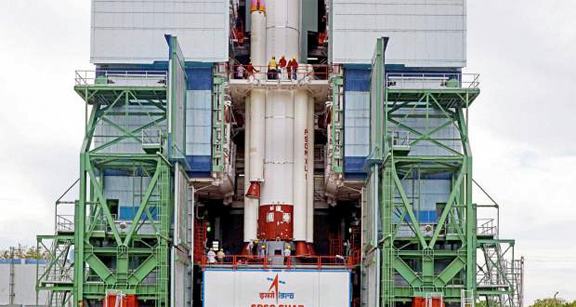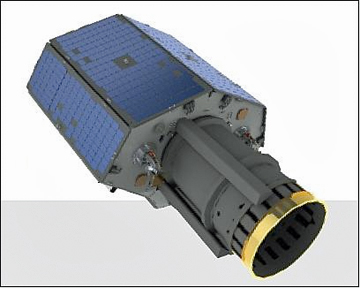
[SatNews] The Indian Space Research Organisation (ISRO) is all set for its heaviest ever commercial mission on Friday, July 10, and will launch three heavy DMC satellites from Surrey Satellite Technology, one micro and one nano satellite.
ISRO is completing this project as entered into by by the organization's commercial arm, Antrix,with the British SSTL. The DMC satellites weigh 447 kg. each, with a total payload of 1,440 kg., the heaviest commercial launch so far for the organization.

The PSLV C-28 will lift off on July 10 from Satish Dhawan Space Centre, Sriharikota (SDSC-SHAR), the spaceport of India from where all major launches, including Chandrayaan-I and Mangalyaan (Mars Orbiter Mission), were all launched successfully. The Polar Satellite Launch Vehicle (PSLV), in its 13th flight (PSLV-C28), will place the three DMC satellites into a 647 km. Sun-Synchronous Orbit (SSO) using the high-end version of PSLV in its ‘XL’ configuration. The other two auxiliary satellites are CBNT-1, a technology demo Earth Observation (EO) micro satellite built by SSTL, and De-OrbitSail, a demo nano satellite built by Surrey Space Centre.

ISRO has built a circular Launcher adapter (L-adapter) and a triangular deck called Multiple Satellite Adapter-Version 2 (MSA-V2) exclusively for the purpose. Further, the DMC3-1, DMC3-2 and DMC3-3 are designed to take simultaneous high spatial resolution and high temporal resolution optical Earth images, said ISRO in a statement.
The lift-off process has 20 stages in all, with the First Stage Ignition followed by Strap-on 1.2 Ignition on ground 0.42 seconds after lift off. The Strap-on 3.4 Ignition will be given at 0.62 seconds after lift off. The Strap-on 5.6 Airlift Ignition will be at 25 seconds after lift off at 2.68 kilometers altitude and at a velocity of 570.51 meters per second. The first stage separation will be at 1 minute 50.38 seconds after the lift off at 68.82 km with a velocity of 2147.52 meters per second. The second stage will follow then separating the payload in its first stage and then in the second and third stages within four minutes from launch. The third stage separation will at eight minutes and the fourth stage will follow within seconds.

Artistic rendition of SSTL's SSTL-300 S1 bus for the
DMC-3 mission.
The image is courtesy of SSTL.
The DMC3-1 will separate from the launch vehicle 17 minutes 56.58 seconds, the DMC3-2 in less than 0.20 seconds thereafter and third one DMC3-3 will follow suit in another 0.22 seconds. All the three DMC3 satellites will separate at 653.09 km. altitude with a velocity of 7532.16 meters per second.
The nano satellite De-Orbitsal will separate at 18 minutes 36.08 seconds after lift off and the fifth and last will the CNBT-1 separation at 19 minutes 16.08 seconds at an altitude of 654.75 km with a velocity of 7532.42 meters per second.
The DMC3 satellites will be launched into a single LEO plane at a phase-wise distance of 120 degrees between them, so they can take any image on the Earth’s surface every day. The mission life of DMC3 satellites will be seven years and they are powered by Lithium Ion 480 Whr, Solar panel-230 W Peak BOL with an imaging resolution of 1m Panchromatic, 4m Multi-Spectral (Blue, Green, Red, NIR).
The organization's last heavy mission was undertaken lat year when PSLV C-23 carried 714-kg payload with French satellite SPOT-7 on June 30, 2014.
Story by MF Monitor

